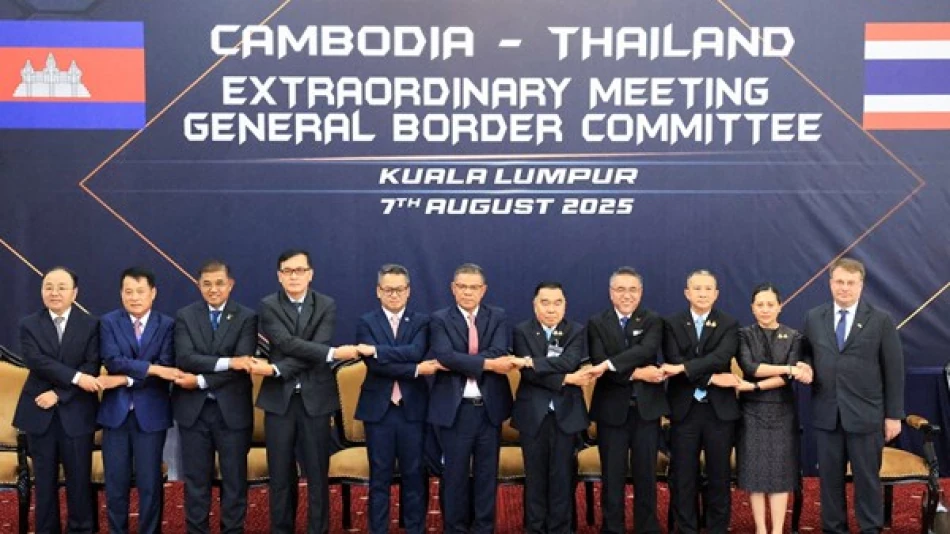
Cambodia and Thailand Agree on Measures to Strengthen Ceasefire Resilience
Cambodia and Thailand Accept ASEAN Monitors to Prevent Border Conflict Escalation
Cambodia and Thailand have agreed to allow ASEAN observers to monitor their disputed border territories following the worst military confrontation between the Southeast Asian neighbors in over a decade. The decision, reached during high-level defense talks in Kuala Lumpur, aims to prevent a resumption of hostilities that killed at least 43 people and displaced over 300,000 civilians in July.
Five Days of Artillery Fire and Air Strikes
The conflict last month marked a dramatic escalation in the long-simmering territorial dispute between the two nations. For five consecutive days, both sides exchanged heavy artillery fire and conducted fighter jet raids across contested border areas before agreeing to a ceasefire in late July.
The intensity of the fighting caught regional observers by surprise, representing the most serious military engagement between Cambodia and Thailand since the early 2000s. The massive displacement of over 300,000 people on both sides of the border highlighted how quickly localized disputes can spiral into humanitarian crises.
Regional Diplomacy Steps In
The agreement emerged from talks between Cambodian Defense Minister Tai Setha and Thailand's Acting Defense Minister Nattawon Narkwanit at Malaysian Armed Forces headquarters in Kuala Lumpur. Malaysia's role as mediator reflects its current position as ASEAN chair and the organization's growing confidence in managing intra-regional conflicts.
Notably, the fighting had continued despite earlier diplomatic interventions from both China and Malaysia, demonstrating the limits of external pressure when territorial disputes reach a boiling point. The fact that ASEAN monitoring is now being accepted suggests both countries recognize the need for sustained international oversight.
Structured Peace Process
According to their joint statement, Cambodia and Thailand have committed to follow-up negotiations within two weeks, followed by another round of talks within a month. This timeline indicates both sides are taking a methodical approach to de-escalation rather than relying solely on the current ceasefire.
ASEAN's Evolving Role in Conflict Management
The acceptance of ASEAN monitors represents a significant development for the regional bloc, which has traditionally adhered to strict non-interference principles. Unlike the European Union or African Union, ASEAN has historically been reluctant to involve itself directly in member state disputes.
This border monitoring mission could establish a precedent for ASEAN's future involvement in regional conflicts, particularly as territorial tensions persist across Southeast Asia. The success or failure of this intervention will likely influence how other ASEAN members view the organization's capacity for conflict resolution.
Implications for Regional Stability
For investors and regional governments, the Cambodia-Thailand agreement offers both immediate relief and longer-term concerns. The acceptance of international monitoring reduces the risk of renewed fighting that could disrupt trade routes and investment flows between the two countries.
However, the underlying territorial dispute remains unresolved. Similar border conflicts in the region—from the South China Sea to various bilateral territorial disagreements—suggest that without addressing root causes, monitoring missions may only provide temporary stability.
The displacement of 300,000 people also underscores the human cost of these disputes, creating potential refugee flows and humanitarian burdens that could strain regional resources if conflicts escalate elsewhere in Southeast Asia.
 Layla Al Mansoori
Layla Al Mansoori







